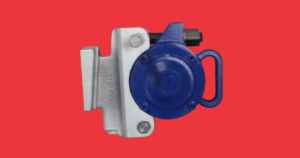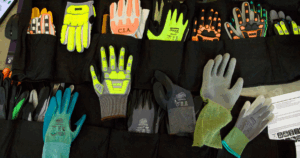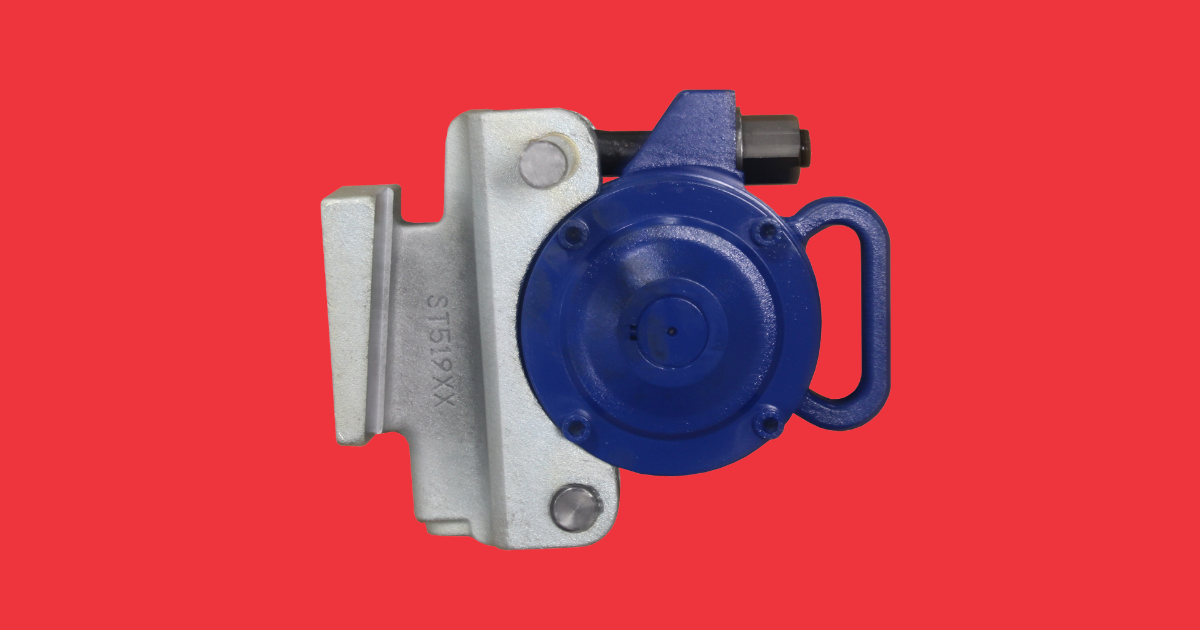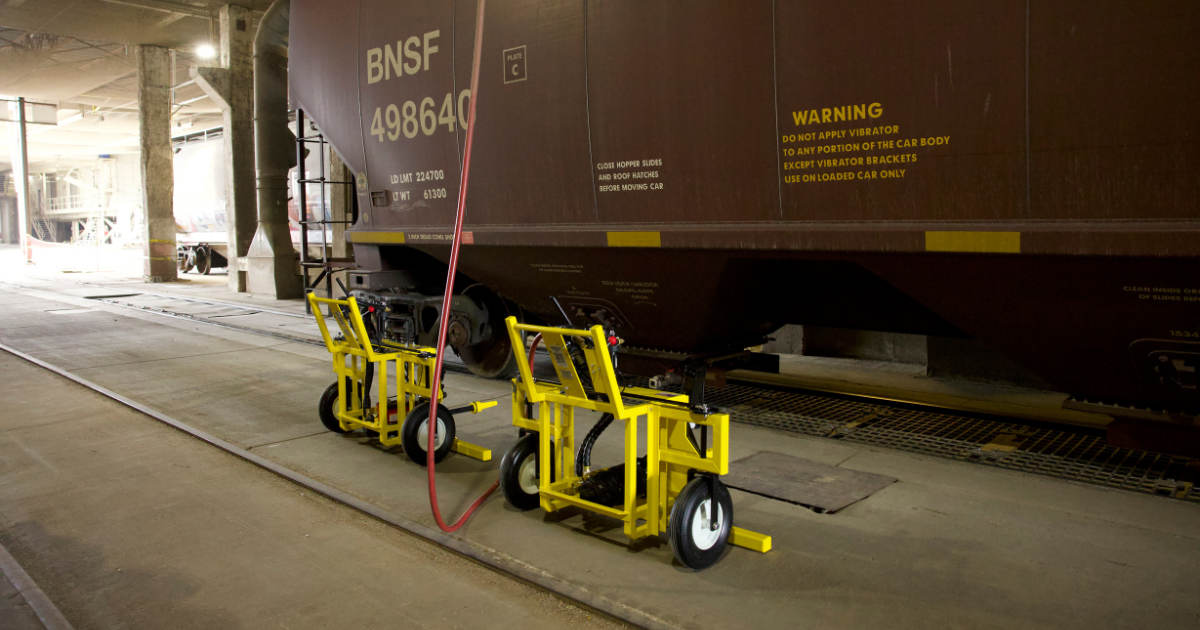Arnold Company recently uncovered the following insights on vibration solutions from Sales & Customer Service Lead Mike Stratis of the Cleveland Vibrator Company.
Learn more about the history behind vibration technology and equipment, how vibration improves productivity for a variety of industries, and why the Rhino Railcar Vibrator Lifter makes the unloading process safer and easier.
Read the in-depth interview with the Cleveland Vibrator Company below!
Q: Can you describe Cleveland Vibrator Company’s background, mission, and product offerings?
A: The Cleveland Vibrator Company was founded in 1923 out of a garage in downtown Cleveland. Our purpose is to build a company that you can rely on for years to come. Our niche is that we make stuff that shakes stuff. The majority of the stuff we make are vibratory flow aid devices which are externally mounted onto stationary equipment such as storage bins, dry bulk material hoppers, dust collection systems, chutes and pipes, or on mobile equipment such as bulk barges, trailers, trucks and railcars.
We also make custom-built, designed-to-spec vibratory material handling equipment to either
- help compact material in containers to increase density for more predictable and lower cost shipping
- convey material from point A to point B (e.g. material storage hopper to mixer tank) to ensure reliable manufacturing processes
- separate materials by particle size to allow for uniformity in material additives into processes
- or remove oversized and/or undersized particles within the material
Q: What industries do you think are best served by vibration equipment and technology?
A: Anything that is a dry or semi-dry material handled in bulk. We started in the foundry industry but have expanded into other industries ever since. These industries are mostly in dry bulk material, agribusiness, aggregates, chemical, food, metal powders, mining, plastics, pharmaceuticals, recycling and scrap, steel mills. To name a few.
Q: What are the different types of vibration solutions?
A: The vibration industry is vast. We focus on air and electric powered devices and machines that can generate brute linear force or centrifugal/rotational vibratory forces. We land on a solution after working closely with the customer to understand their needs, expectations, and applications.
Q: What common industry challenges are overcome with the help of vibration equipment?
A: Vibration equipment typically solves challenges of material flow, material separation, and material compaction or densification.
Examples of this are:
- Automation of the manually intensive labor processes such as swinging a heavy hammer or mallet to smack the side of a bin or railcar with stuck material inside.
- Shaking material through screens to separate by size.
- Or, shaking bulk material in boxes to settle and compact it while or after filling.
This last one is pertinent to a very common topic for all of us these days, to help with social distancing by lowering human density in fill, pack, and seal lines in manufacturing operations.
Q: How does vibration aid operations and increase productivity?
A: By automating the hammer swing, production can be on a steady track. No need to stop the process to climb up on a ladder to smack the side of the bin to break free bridging or rat holing material. Knocking off the dust from inside a dust collector allows the collector itself to operate more efficiently, saving the equipment itself and lowering operational costs.
Most importantly, externally mounted vibrators on bins can also remove the need for entering a bin to clear a bridge or clog. Bin entry has been a major area for workplace death, especially in agribusiness.
For the equipment that helps with employee distancing, it helps lower congestion of bodies at a railcar unloading station or a material bag dumping station which can free those workers to do other tasks for those companies.
Q: In what ways does vibration improve operator safety?
A: We hear it all the time. Operator’s shoulders, backs and arms can be saved by putting down the hammers after properly installing the correctly sized and selected vibrators. Also, by increasing the space between workers after installation of vibration equipment to help with distancing while helping with throughput.
Q: What are helpful tips for choosing the safest and most efficient equipment?
A: For the vibratory flow aid side of the business, we put together our Vibrator Selection Guide in 2016 to break it down to three easy steps:
- Determine the number of vibrators required for the job (this is based on geometry of whatever we are shaking).
- Find the strength of vibration required based on material characteristics.
- Figure out best type(s) of vibration for the application based on power source requirements, noise and environmental concerns, material properties and the overall goal of the vibration itself.
Q: How do you customize equipment to fit customer needs?
A: The vibrator side of our business relies on a wide range of cataloged products that we stock for various applications. Once we review the three easy steps with the customers and understand the application, we have over 400 air powered and electric powered vibrators to choose from to solve the problem. The vibratory equipment side of our business is all custom. Those machines are built to order and made specifically for the application.
Q: How is the Rhino Railcar Vibrator Lifter from Arnold Company designed to accommodate your line of piston railcar vibrators?
A: The Rhino has quickly become the best friend of our three largest air powered piston vibrators used to unload railcars.
These units are made of steel and ductile iron castings with a steel machined piston inside. They weigh between 75 and 165 pounds, depending on the model. The Rhino makes it much easier, faster, and safer for the operators to use our heavy-duty vibrators to quickly unload the railcars.
It can be tough to drop the male wedge on the front end of the piston vibrator into the female pockets on the hoppers of railcars at the rail yard given that most of these rail yards have tight spaces near the unloading stations. With the Rhino, the load and unload process of the vibrator into and out of the railcar female pocket is much easier.
See the Rhino in action!
Q: Are there any additional insights or customer feedback you would like to share?
A: This Rhino machine has expanded our capabilities to offer our piston railcar vibrators, including the 1400 VMRR model that weighs 165 pounds, to more customers. Prior to the Rhino, there was no easy way to handle the 1400. Either multiple operators or multiple operators and supporting equipment (forklifts, cranes, etc.) were required to load and unload the vibrator into and out of the female pockets on the railcars.
Now, with the Rhino, all it takes is a single operator and a few pushes of some levers or buttons.
“The Rhino design made it very easy to transport the vibrators around our receiving bay and move from railcar to railcar without breaking a sweat. The ergonomic designed put a peace of mind that my employees weren’t jeopardizing their backs and I wasn’t putting them or the plant at risk for liability. The Rhino was a great investment for the rail team at the facility. Easily one of the most efficient and safe tools I have ever purchased for my employees. Anything to eliminate back injuries and make the employee daily routine easier is what I was looking for and the Rhino provided that for our facility.” D. Winters, Purina














